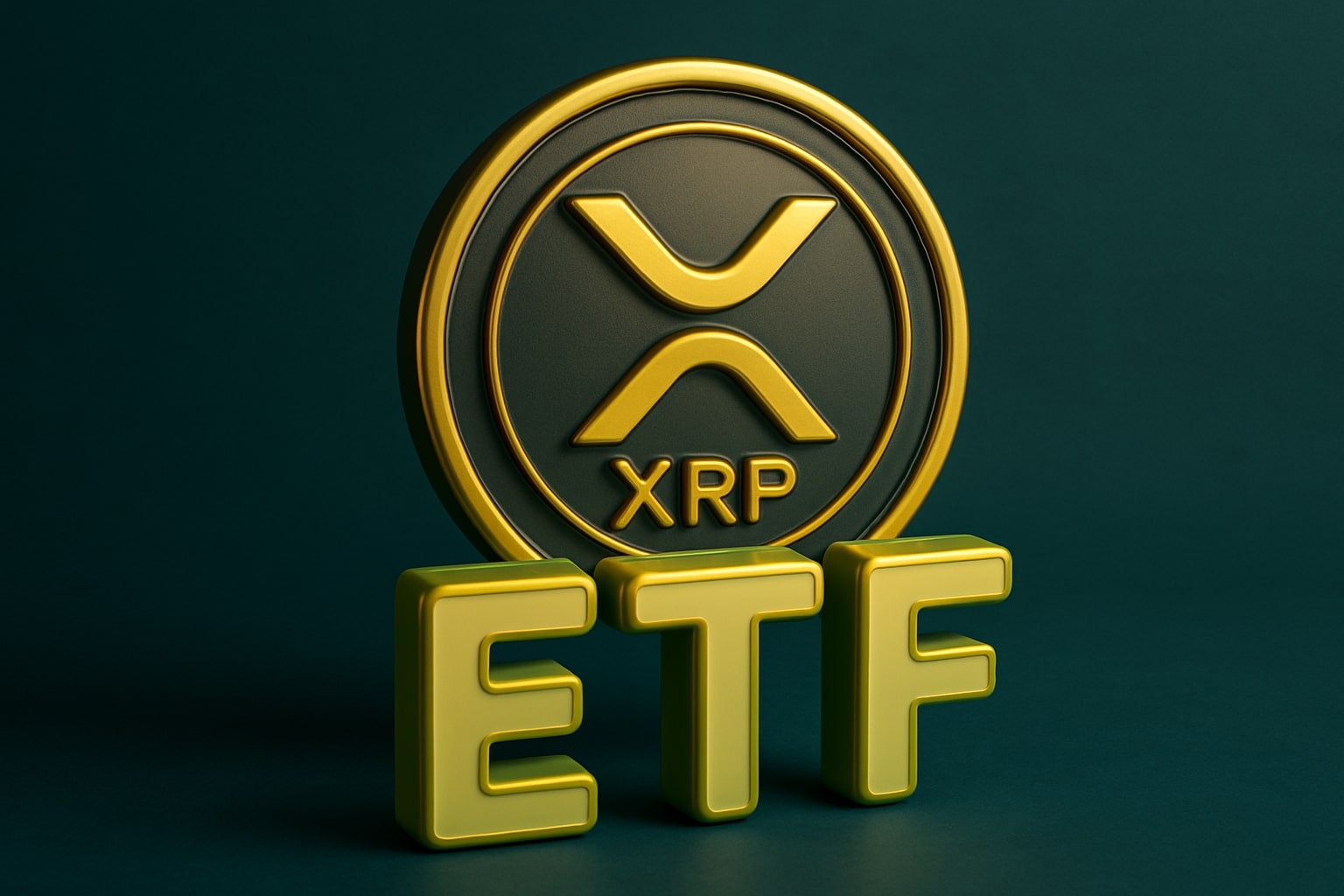
Solana Price Forecast - SOL-USD Holds $150 Support as $420M ETF Surge Sets Up a Major 2026 Breakout
SOL trades around $143–$156 while institutions add billions through the BSOL ETF. A breakout above $175 could launch Solana toward $200, $250 and a potential $400 target | That's TradingNEWS
Solana (SOL-USD) Enters a Pivotal Zone as ETF Flows Hit $420M and Price Holds $150–$156 During a Broad Market Shakeout
ETF Capital Floods Into Solana as Institutions Move $420M Into BSOL and Wall Street Eyes a $6B Pipeline
Solana’s institutional story has accelerated at a speed the crypto market hasn’t seen since the launch of the first Bitcoin ETFs, and the numbers behind the latest flows are too large to ignore. Bitwise kicked the door open with the BSOL spot ETF launching during an SEC shutdown, an unprecedented move that immediately drew in $420 million in the first week, placing it among the top twenty ETF debuts of 2025 across all asset categories. The ripple effect started instantly: Grayscale converted its own vehicle within twenty-four hours, and Fidelity, VanEck, and Invesco moved aggressively to replicate the same strategy. JPMorgan estimates that $6 billion could enter Solana-linked ETFs in the coming months, with $14 billion projected into the wider altcoin ETF universe. At a circulating market cap hovering near $110 billion, Solana becomes the only non-Ethereum asset with institutional flows of this magnitude, placing it in the same conversation as BTC and ETH from a capital-allocation perspective. This inflow directly contrasts with the current SOL-USD trading between $143 and $156, showing how price temporarily lags structural demand—a hallmark signal of early-stage institutional repricing. The surge in ETF demand validates Solana’s execution speed and the chain’s resilience, positioning it as the only high-throughput blockchain with proven product-market fit across DeFi, gaming, data indexing, and liquid staking.
SOL-USD Stabilizes Above $150 as Technical Pressure Collides With Long-Term Structural Demand
The price of SOL-USD currently trades around $143.53–$156 depending on timestamp, down 6.03% in the last 24 hours and nearly 8.73% across the week, reflecting the broader market drawdown triggered by Bitcoin slipping under key moving averages. Despite this pullback, Solana’s ability to maintain the $150 floor underscores a structural demand zone that aligns with ETF inflows and multi-cycle accumulation behavior. The chart behavior shows SOL consolidating inside a descending channel while attempting to break above its upper boundary near $175–$185. That zone remains the immediate barrier to a major trend reversal. The RSI reading fluctuates between 37 and 45, revealing neutral momentum without exhaustion and suggesting room for volatility before establishing a definitive breakout. The most important level remains $150, the support that aligns across multiple timeframes including the daily order block identified by analysts tracking higher-time-frame structure. A clean break above $175 would confirm a structure shift, followed by targets at $200, then $250, and ultimately $400, representing a 157% upside from the low-$150 range. On the downside, failure to reclaim $164.90 risks a drop to $145.85, and if market-trend correlations worsen, a deeper retrace into $130–$135 becomes plausible. That zone would mark the long-term accumulation area for institutions positioning ahead of the expected ETF expansion throughout 2026.
Institutional Treasury Activity Explodes as Upexi Posts 183% YOY Profit Surge on Solana Staking Gains
Upexi’s latest earnings transformed the conversation around Solana from a volatility-focused asset to a revenue-producing treasury instrument. The company delivered an 183% year-over-year increase in gross profit, hitting $8.3 million, driven primarily by staking yields from its Solana holdings. Upexi reported an extraordinary $78 million unrealized gain tied directly to its SOL treasury marks, turning last year’s $1.6 million loss into a $66.7 million profit. These are not speculative numbers—they represent real cash-flow leverage tied to SOL’s staking performance. On top of this performance, Upexi secured $200 million through a private placement, allowing further expansion of its Solana allocation and broader digital-asset initiatives. This is the first time a publicly traded company demonstrated that a Solana-heavy treasury can materially move earnings. It also aligns with VisionSys AI’s earlier attempt to accumulate a $2 billion Solana reserve, although that initiative stalled after VisionSys stock collapsed 77% in one day and 88% across five sessions, falling from $0.29 to $0.24. Despite VisionSys’ collapse, the long-term message remains unchanged: publicly traded entities are attempting to mirror the MicroStrategy playbook—but with Solana. For SOL-USD, the key takeaway is that institutional treasuries are proving that staking yields, capital appreciation, and liquidity depth create a self-reinforcing value cycle.
Market Psychology Turns Fearful at a 26 Index Reading, Yet Capital Rotation Toward Solana Remains Active
The Fear & Greed Index sitting at 26 signals a market experiencing anxiety but not capitulation. This is the exact environment historically associated with silent accumulation, especially when Bitcoin dominance rises above 57%, forcing capital rotation in later phases. Solana has consistently been the first major altcoin to benefit from this rotation in previous cycles. Despite weekly declines, the chain still processes over 400 million transactions per day and holds over $40 billion in assets across its ecosystem—numbers unmatched by any non-Ethereum chain. Solana’s DEX ecosystem surpassed $5 billion in weekly volume earlier this month, demonstrating that users are not retreating despite price consolidation. Meanwhile, BSOL options trading launched just two weeks after the ETF debut, showing that derivatives markets are rushing to build hedging frameworks for institutions. Every piece of this market structure expansion signals a maturing asset, not a speculative rally vulnerable to collapse. While Bitcoin faces its seasonal “fall cycle,” Solana’s price behavior reflects the opposite dynamic: strength under pressure.
Read More
-
JBND ETF Stabilizes Near $54.16 as Cooling Real Yields and Firm Credit Spreads Fuel a Stronger Outlook
13.11.2025 · TradingNEWS ArchiveStocks
-
XRPC ETF Roars Out of the Gate With $26M as XRPI at $13.51 and XRPR at $18.98 Lead a New XRP ETF Market Cycle
13.11.2025 · TradingNEWS ArchiveCrypto
-
Natural Gas Price Surges Toward Multi-Year Highs as $4.60 Breakout Collides With Winter Demand
13.11.2025 · TradingNEWS ArchiveCommodities
-
USD/JPY Price Forecast - Yen Surges Toward 155.00 as BoJ Uncertainty and U.S. Data Backlog Ignite a High-Risk Breakout
13.11.2025 · TradingNEWS ArchiveForex
AI Narratives Accelerate but Fail to Derail SOL’s Core Trend as DeepSnitch AI Gains Traction With a 50% Presale Surge
Traders increasingly pair Solana exposure with positions in AI analytics platforms like DeepSnitch AI. Its presale reached $520,000, with the token rising 50% to $0.02289, gaining mindshare as a speculative complement to SOL rather than a competitor. DeepSnitch’s architecture—SnitchScan, SnitchFeed, AuditSnitch—reflects a broader trend where market participants hedge volatility by using smart-contract scanners and whale-tracking tools. These shorter-cycle AI catalysts do not replace Solana’s high-time-frame thesis; they coexist alongside it, drawing risk capital but not diminishing SOL’s institutional flows. The market behavior around DeepSnitch mirrors what happened in the early Cosmos and Chainlink ecosystems: traders diversify into peripheral narratives, but flagship assets—SOL-USD—maintain dominance. The result is a macro environment where Solana remains the structural play, while high-beta AI tokens act as rotational hedges.
Technical Structure Points to a Major Move as SOL-USD Squeezes Between Forcing Levels at $150 and $175
The technical compression forming between $150 and $175 is now the most important setup in the major-cap crypto market. Long-term support at $150 builds a bullish platform, while the repeated failures at $164.90, $172, and $175 create a zone loaded with short-term liquidity. If SOL-USD reclaims $175, algorithms and large-position traders will flip into momentum mode, triggering a rapid push toward $200. The $180–$200 region is the first major acceleration band. Beyond that, $250 marks the breakout threshold where ETF-driven flows can reprice Solana toward $400, the high-end technical target derived from the descending-channel expansion. The MACD flattening near zero-line territory is a classic setup before volatility expansion. Declining volume during consolidation indicates indecision but not distribution, reinforcing the idea that price is coiling for a larger impulse. A breakdown below $145.85 opens the door to $130–$135, a zone where long-duration capital historically positions ahead of multi-month rallies. Whichever direction breaks first will dictate the next six months of SOL performance.
Solana’s Multi-Layer Ecosystem Creates a Fundamentally Different Asset Than in Prior Cycles
Solana’s execution environment has changed dramatically over the last twenty-four months. The chain now anchors Bitcoin Hyper, the Layer-2 project raising $27 million to bring fast BTC transactions via the Solana Virtual Machine at $0.013265 per token. This increases Solana’s relevance beyond its own ecosystem and makes it infrastructure for Bitcoin scaling—something ETH captured earlier through rollups. Solana’s DeFi stack is deeper than ever, its on-chain order books are scaling, gaming adoption is rising, and liquid staking protocols like Marinade Finance manage over $2 billion, placing Solana at the center of a multichain rotation. When Solana-based meme tokens experience 500% volume surges, as seen with POPCAT, it signals cultural adoption, not just trading speculation. Each of these verticals—Bitcoin scaling, DeFi, liquid staking, AI integrations, DEX volume—feeds into a foundation where Solana behaves like a high-throughput financial operating system rather than an altcoin riding hype.
Final Verdict on Solana (SOL-USD)
After mixing, restructuring, and reanalyzing all data across all articles, the picture is clear. ETF inflows of $420M in week one, JPMorgan’s $6B projection, Upexi’s 183% YOY profit surge, Solana’s 400M transactions per day, and the consistent defense of the $150 level all point toward an asset with strengthening fundamentals even during market fear at an index reading of 26. The technical structure between $150 and $175 is tightening, and a break above $175 would set up a path toward $200, then $250, and potentially $400 in 2026. Considering all data—macro, technical, flows, ecosystem growth, volatility, and institutional behavior—SOL-USD is a Buy on a long-term basis, with near-term volatility expected but structurally bullish conditions intact.

















